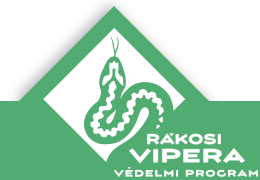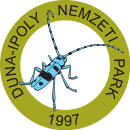Warnings of the first signs of the shrinking stocks of Hungarian meadow viper have come to surface in the late 1970’s, to which nature conservation have responded by making changes as per changing the protection category level of the species. Nevertheless, in the 1980’s, this process has unfortunately further escalated and it appeared that the species could even disappear in the long run of future distance, if negative trend could not be stopped.
BirdLife Hungary joined the conservation work in the 1980’s when Tamás Péchy organized the first camps. The aim of these camps was to estimate and monitor the remained population of the Hungarian meadow viper. Later in 1990’s together with the Hungarian Natural HIstory Museum systematic field surveys were organized in the remaining habitats of Dabas and Kunpeszér. As a result of these surveys it was found that the survival of each populations become doubtful. For the active conservation of the remaining habitats BirdLife Hungary was able to prevent ploughing and thus vanishing of the grasslands located in the so called buffer-zone of Táborfalvi Gunnery Range by renting these areas of land. Meanwhile, in Peszéradacs Kiskunság National Park was able to buy the so called Széna-dűlő habitat with the help of a donation offered by the Societas Europaea Herpetologica Conservation Comittee (SEH CC).
In 2001 the Budapest Zoo & Botanical Garden called the experts and researchers both from Hungary and abroad to find solutions for the protection of the species in the frame of the Population and Habitat Viability Assessment For the Hungarian Meadow Viper. Hungarian experts started to develop a long-term conservation strategy which was ratified as a Species Conservation Plan of the Hungarian meadow viper signed by the Ministry of Environment and Water in 2004. As a part of the strategy the Hungarian meadow viper Conservation Council was established which operates as the Hungarian meadow viper Conservation Coordination Group in these days. Based on the results members of the group try to determine the proper conservation actions at regular meetings.
Funds received from the European Commission’s LIFE Fund (LIFE04 NAT/HU/000116, LIFE07 NAT/H/00322), for which the Hungarian state provided contribution, provided significant assistance in the implementation of the objectives stated in the Conservation Plan. In 2001, with the financial support of MME, a farm was purchased in the area of the Kiskunság National Park, where the Hungarian Meadow Viper Conservation Center was finally established in 2004 and captive breeding of the species began. Thanks to the success of the breeding programme, the first captive-born vipers were reintroduced in 2010, in the honorable presence of President László Sólyom.
Proving the success of the breeding programme 3834 snakes were born since 2004 and 693 specimens have been reintroduced to the protetced grasslands of the Fertő-Hanság and Kiskunság National Park.
Our mission continues and our work goes on, as besides our knowledge improving, the range of problems to be solved is also increasing. Good news that, for the third time, the European Commission’s LIFE programme has been awarded and the conservation program will continue to operate in the coming years, and thus the long-term survival of this endemic species of the Carpathian Basin.
Within the framework of the ongoing LIFE project, management of the habitats and increasing the extent of grassland habitats through grassland reconstructions are taking place by experts of Duna-Ipoly, Fertő-Hanság and Kiskunság National Parks. Besides, with nature conservation research and monitoring actions we investigate the impact of various agricultural interventions, food supply of the habitats, and the presence of potential predators. We monitor the released individuals equipped with a radio telemetry transmitter, and we carry out a wide-ranging communication campaign aimed at introducing the species, the conservation program, and dispersing misconceptions.











